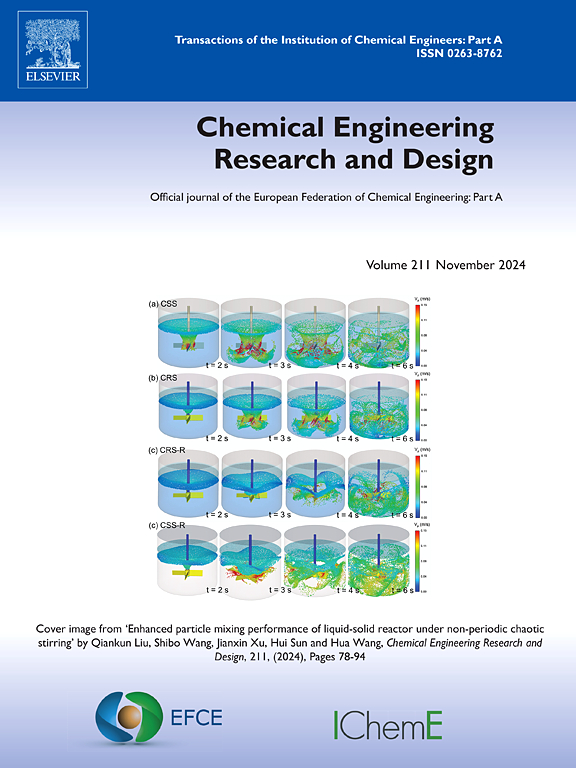Development of an air-flow sorting device for the enrichment of fine particles from fire scene residues
IF 3.7
3区 工程技术
Q2 ENGINEERING, CHEMICAL
引用次数: 0
Abstract
Detecting cigarette ash in fire scene residues is crucial for determining the cause of fire disasters. Due to the extremely low concentration of cigarette ash, direct acid leaching and spectroscopic analysis are time-consuming and unreliable. This study developed an air-flow sorting device that combines centrifugal and fluidization technologies to pre-enrich cigarette ash, a significant lightweight material. To enhance the enrichment performance of the air-flow sorting device for cigarette ash, the study systematically investigated the impact of the rotary fluidized chamber's placement angle and cylinder height on the flow field characteristics and separation performance through numerical simulations and physical experiments. The results indicate that these parameters impact separation performance by affecting static pressure distribution, tangential velocity, axial velocity, and turbulence intensity. The optimum performance is attained when the rotary fluidized chamber's placement angle is inverted and the cylinder height measures 300 mm. At a fan frequency of 40 Hz, the pressure drop, yield, d50, enrichment ratio, and recovery are 2460 Pa, 20.45 %, 25.71 μm, 4.2, and 78.71 %, respectively. The findings offer theoretical guidance for the structural design and optimization of practical equipment for cigarette ash enrichment.
火场残留物细颗粒富集气流分选装置的研制
在火灾现场残留物中检测烟灰是确定火灾原因的关键。由于烟灰浓度极低,直接酸浸和光谱分析既耗时又不可靠。本研究开发了一种结合离心和流态化技术的气流分选装置,对重要的轻质材料烟灰进行预富集。为了提高烟灰气流分选装置的富集性能,本研究通过数值模拟和物理实验,系统研究了旋转流化室放置角度和筒体高度对流场特性和分离性能的影响。结果表明,这些参数通过影响静压分布、切向速度、轴向速度和湍流强度来影响分离性能。旋转流化室的放置角度为反向,气缸高度为300 mm时,可获得最佳性能。风机频率为40 Hz时,压降为2460 Pa,产率为20.45 %,d50为25.71 μm,富集率为4.2,回收率为78.71 %。研究结果为烟灰浓缩装置的结构设计和优化提供了理论指导。
本文章由计算机程序翻译,如有差异,请以英文原文为准。
求助全文
约1分钟内获得全文
求助全文
来源期刊

Chemical Engineering Research & Design
工程技术-工程:化工
CiteScore
6.10
自引率
7.70%
发文量
623
审稿时长
42 days
期刊介绍:
ChERD aims to be the principal international journal for publication of high quality, original papers in chemical engineering.
Papers showing how research results can be used in chemical engineering design, and accounts of experimental or theoretical research work bringing new perspectives to established principles, highlighting unsolved problems or indicating directions for future research, are particularly welcome. Contributions that deal with new developments in plant or processes and that can be given quantitative expression are encouraged. The journal is especially interested in papers that extend the boundaries of traditional chemical engineering.
 求助内容:
求助内容: 应助结果提醒方式:
应助结果提醒方式:


